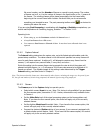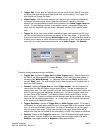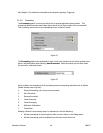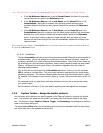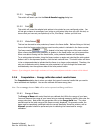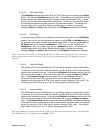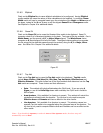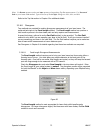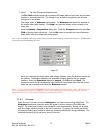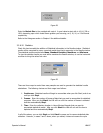
Figure 23
If you enter an Energy of Beam value of 0 (zero) the
energy
related results items, such as,
Total (
energy
), Peak (fluence), Min, Gauss Height, etc., will be computed in processed
digitizer units. Processed digitizer units are called counts, and are dimensionless. In this case,
no units will be displayed in the results window.
Any non-zero entry will cause the displayed results to be reported in the units selected. Fluence
results will also rely upon the Pixel Units entry to complete the energy density definition. A
Pixel Unit selection of PX stands for pixel spatial units. The PX unit is dimensionless.
When the Scale Units are set to µm, mm, or cm, the
energy
density results are computed as
energy
/cm². When the scale units are set to PX or m, the density results are displayed as
energy
/PX², or
energy
/m² respectively.
3.2.6.2 Energy Calibration Procedure
After you have set up the LBA-PC and are ready to acquire data, the
energy
calibration procedure
involves the following three operation:
1. Execute an Ultracal! operation.
2. Acquire a calibration frame on the 2D display and a matching
energy
measurement on an
external power/energy meter.
3. Enter the
energy
and select the units in the Computations dialog box.
3.2.6.3 Quantitative display, on/off
Check the Quantitative box if you want to have the quantitative results item appear in the results
window. Checking this box only controls the display of these results. Even if not checked, these
results will be computed. The only way to turn off all computational activity is to minimize the
Results display window. The displayed quantitative results consist of the following:
• Total
energy
• % in Aperture
• Peak fluence
• Min
• Peak Loc..ation, in X and Y
• Centroid location, in X and Y
• Beam Width, in both X and Y or Major and Minor axes
• Beam Diameter
Operator’s Manual LBA-PC
68



